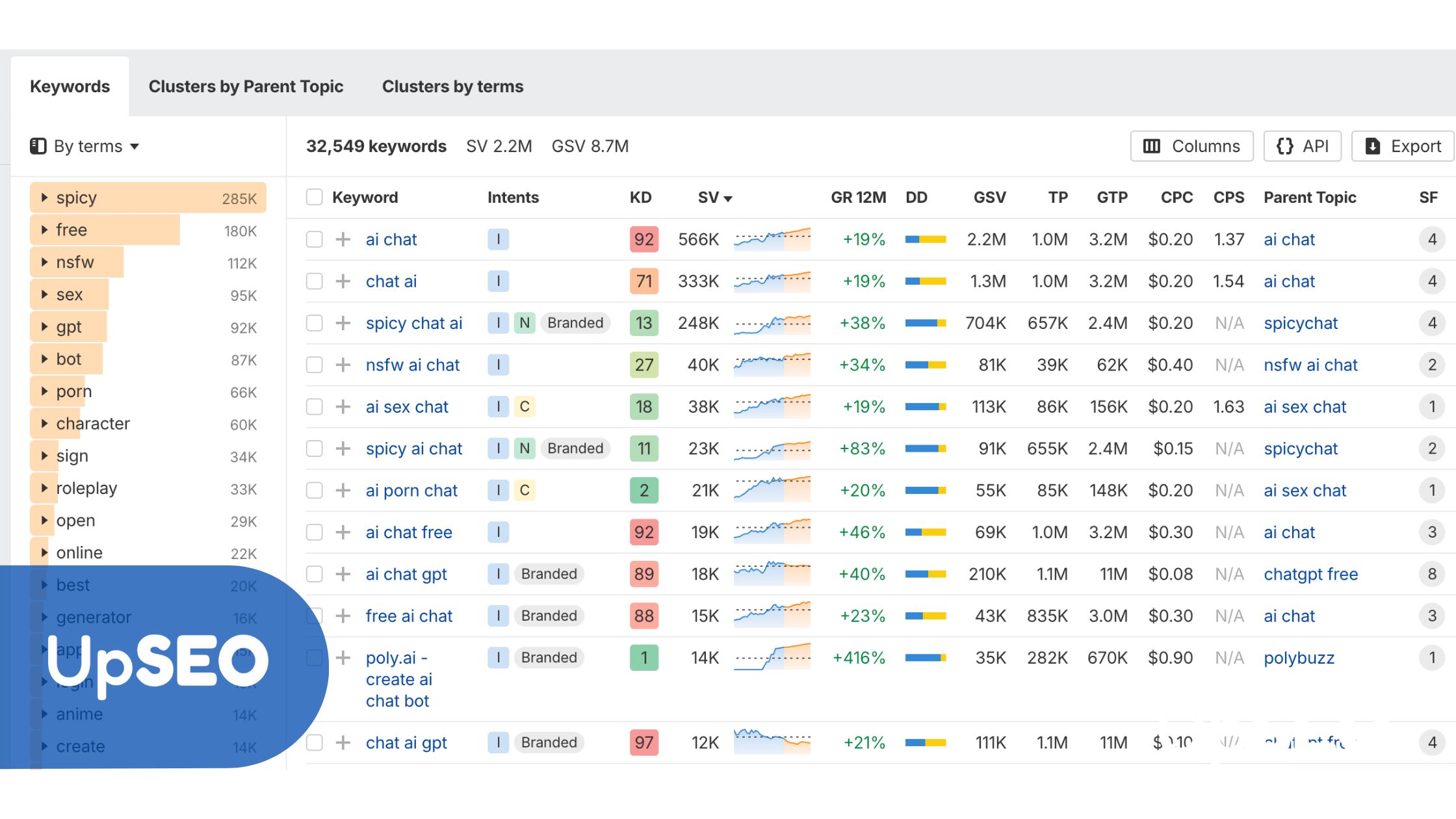With 137,000 startups emerging every day, only 10% of them hits the success boundary. Why is it so? There are so many underlying reasons, including a lack of strategy, technical, managemental, and entrepreneurial skills, running out of cash, or unsupportive behavior by investors.
But do you know what can make a win-win situation for startups? If they manage to secure the #1 spot on the search engine result page (SERP), half of the battle is almost conquered. It is not just a talk of words, but the statistics claim that the first position receives an average CTR of 7.94%. It means that you can have a 7.94% audience from the 8.5 billion Google searches on your website.
But is it as simple as it seems to be? Definitely no. An exceptional SEO strategy is what you need to stand at the top of Google. This guide is all specifically curated for those who have just stepped into the world of entrepreneurship and are looking forward to making staggering profits by securing the top spot on the SERP.
So, give it a read if you want to position your startup in the list of those 10% who succeed, not the rest of the 90% who have to wrap up the startups of their dreams.

- Craft an SEO Strategy on a Shoestring Budget
- Establish Your Brand's Online Authority
- Using SEO for High-Competition Markets
- Make Your SEO Strategy Flexible
- Achieve Quick Wins for Stakeholder Confidence
- Build a Strong Technical Foundation
- Develop A Sustainable Content Strategy
- Let Not Your StartUp Get Dumped Into Heaps By UpSEO!
Tip 1: Craft an SEO Strategy on a Shoestring Budget
- Maximize Limited Resources:
If you are operating on a tight budget, instead of spending all of your initial investment to strengthen your SEO instantly, go for high-impact, low-cost SEO tactics. One of the proven ways is not to jump into the search for international clients. Instead, focus on the local clients as the competition is relatively low, so you can easily secure your desired spots.
For this purpose, you need to do quite simple actions like optimizing your Google Business Profile and collecting local reviews. Moreover, instead of revamping your content and starting from scratch, just repurpose it. Convert the blog posts into infographics, videos, or social media posts to save money and time on new content creation. - Invest Wisely in Tools:
You don’t need to break the bank on premium SEO tools or hire costly agencies. There are many affordable options available in the market that can be availed at a fraction of the price of industry leaders. These tools help with keyword research, rank tracking, and site audits so that you can get the necessary insights to guide your SEO efforts without a large financial commitment. - Use In-House Talent:
Tap into your team’s existing skill sets to cover essential SEO tasks. Someone with writing expertise can take on content creation and optimization, while a tech-savvy teammate can handle basic technical SEO fixes like improving site speed or setting up proper meta tags. Training your staff to handle SEO tasks will keep costs down and allow your startup to grow its search presence organically.
Tip 2: Establish Your Brand's Online Authority
- Build Trust and Credibility
With so many businesses in the market, you need to show yourself as someone who is authentic with its services or products. Trust is a key factor in both search engine rankings and customer conversion, and one of the most effective ways to build trust is by using customer testimonials and case studies.
Apart from building a positive brand reputation, these positive testimonials and reviews increase your site’s authority and signal the search engines that your content is reliable. - Position Your StartUp As An Industry Leader
Instead of posting generic content that every other brand is posting, post in-depth blog posts, guides, and white papers that provide your audience with valuable insights into your niche. Whether it's sharing new trends, offering expert opinions, or solving complex problems, this type of content strengthens your brand’s authority and attracts backlinks, both of which boost SEO performance.

- Collaborative Content PartnershipsI
Another hack to position yourself as an authentic brand is to collaborate with influencers and “co-create content.” To do so, you need to collaborate on joint webinars, guest blog posts, and social media campaigns with reputable partners. In this way, you will be able to drive a fraction of their massive audience who may not be familiar with your brand. It will ultimately boost your SEO rankings as well, and the more traffic you have, the better your rankings will be.
Tip 3: Using SEO for High-Competition Markets
- Identify and Target Niche Audiences
Targeting the broad audience, which is already being targeted by the giants when you are short on budget, is just like running after the wind. So, instead of targeting them, conduct focused market research to discover underserved or highly specific niches within your industry.
You can also try to long-tail keywords, as they are usually overlooked and have low search volume. However, the truth is that they have higher search intent. When you target smaller, specialized groups, your startup can rank for keywords that bigger competitors often overlook.
Here’s a table to make you better understand the variety of niches and what their content strategy should be like:

- Differentiate Your Brand
If you are not selling something out of the world and some peers have already been selling it for years, why should someone choose you over them? This is what you need to make clear to your audience and search engine.
For this purpose, identify the unique selling points (USPs) of your business and develop such content that highlights the distinct value propositions of your brand as well. It can be anything from innovative features to exceptional customer service or sustainability.
Don’t forget to use separate SEO-optimized blog posts, landing pages, and product descriptions featuring these USPs to also signal the search engine about your USPs so that it shows you as an option to those customers who are looking for something specific. - Make Use of Local SEO
Being a startup, directly jumping onto a wider audience is not always the right decision. Start by winning your local market first by focusing on the geo-local keywords, optimizing your Google Business Profile, and adding reviews from local customers. By following this approach, you can easily rank in local search results, which helps you tap into nearby customers who are more likely to convert into loyal supporters.
Tip 4: Make Your SEO Strategy Flexible
- Update Content and Structure
Whenever the directorial board finalizes any change in the business model, no matter what the scale of change is, it is essential to audit and update your website content as well. Outdated information or services that no longer reflect your current offerings can adversely affect both user experience and SEO rankings. For this purpose, regularly review your site’s structure, meta tags, and internal links to ensure that they align with your new goals. - Communicate the Changes
Clear communication is crucial when adapting to major changes, both for your users and search engines. Be transparent with your audience through blog posts, email updates, and social media announcements about the updates.
From an SEO perspective, submit updated sitemaps to Google and use 301 redirects for any content change. This helps the search engine understand and properly index your new focus and minimize any potential ranking disruptions.
Tip 5: Achieve Quick Wins for Stakeholder Confidence
- Prioritize High-Impact SEO Activities
However, your SEO strategy must be long-term, and it must include quick wins as well. You can achieve quick wins by optimizing your most popular pages. Improve their meta tags, write top-notch content that complies with the SEO guidelines, and incorporate keywords in the right density. Additionally, improve the speed of your site as it improves the user experience and search engine rankings as well.
- Tracking and Demonstrating Progress
Instead of setting “sales” as your performance tracking metrics, set clear and short-term performance indicators. These can be an increase in organic traffic, improvement in keyword ranking, or faster site loading times. Keep regular track of these metrics and report these KPIs to your stakeholders as well to keep them in the loop. - Educate Stakeholders on SEO Timelines
It is essential to make the stakeholders understand that magic doesn’t happen overnight so does SEO. It takes time for SEO to see prominent results, so they have to set their expectations.
Tip 6: Build a Strong Technical Foundation
- Technical SEO Basics for StartupsTracking and Demonstrating Progress
To succeed in the long run, the technical foundation of your website’s SEO must be strong. Start by making your website mobile-responsive, as most Google searches come from mobiles.
Implement secure site protocols like HTTPS as they boost security and also help in building trust with users and search engines. Lastly, optimize images, use a content delivery network (CDN), and utilize browser caching to increase the site loading speed. - Using a Scalable CMS
Your content management system (CMS) plays a crucial role in your SEO efforts. Select a CMS that supports growth and has strong SEO capabilities, such as WordPress or Shopify. - SEO-Friendly Site Architecture
Good site architecture is the backbone of an SEO-friendly website. Design a clean, intuitive structure that organizes your content logically, using clear hierarchies, internal linking, and simple URLs. It is not only for the users coming to your site but also for the search engine’s crawlers.
Tip 7: Develop A Sustainable Content Strategy
- Quality Over Quantity
Don’t be one of those brands that churn out a large volume of low-impact material. Instead, produce high-value content that aligns well with your target audience and matches their search intent as well. Keep in mind that Google’s algorithm strictly follows the rule of “Quality over Quantity. - Repurpose Content Assets
Don’t let the dead content stay on your website; revive it by repurposing it. You can either make amendments to it by adding some recent updates or change its format by converting it into a video, infographic, podcast episode, or social media snippet.
- User-Generated Content
Encourage your customers or followers to make UGC content for your brand, such as reviews, testimonials, social media posts, or even blog entries, as it increases engagement and adds authenticity to your brand.


